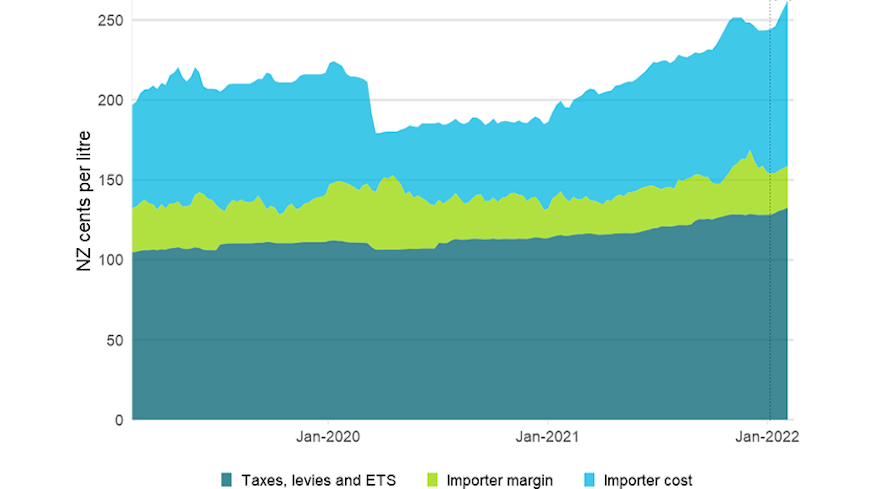
By Jon Duffy
Chief Executive | Tumu Whakarae
Why have petrol prices suddenly got so high?
The high prices are due to a number of factors, which makes the answer to this question quite complex.
The Commerce Commission found in its recent market study that fuel companies have been making persistently higher profits over the last decade than would be expected in a competitive market. This is due in part to the structure of the market, including the lack of an active wholesale market and the major fuel companies’ joint infrastructure which allows them to control the supply chain, giving them an advantage over other fuel importers.
This lack of competition amplifies other factors, such as the volatility of crude oil prices, rising supply chain costs and the reality that petrol and diesel are also subject to a range of domestic taxes added onto the price charged by the fuel companies.
On top of all this, inflation is also at a 30-year high, and, just like rent and other essential goods and services, fuel is subject to inflationary pressures.
What about petrol taxes?
The Petrol Excise Duty, or PED, combined with other levies comes to 77.274¢ per litre. This money goes to the National Land Transport Fund, which pays for our roading networks. The last rise in PED was in July 2020, and at the time the government ruled out any more rises for the next three years – but has also said it has no plans to lower the excise tax.
Once you include GST, the Emissions Trading Scheme levy and the Auckland fuel levy, the total taxes and levies come to around $1.15 per litre.

From MBIE, week commencing 7 February.
Are petrol prices likely to keep rising?
Don’t expect relief from high prices any time soon. Based on current economic forecasts, it is highly likely that fuel prices will stay high for the foreseeable future. This will be influenced by the potential for more fuel companies to leave the New Zealand market, leading to greater concentration and even less competition, and continued pressure to tax fuel to mitigate the environmental impacts of fossil fuel use.
Wasn’t the market study by the Commerce Commission in 2019 meant to deal with high petrol prices?
From Friday, 11 February, service stations will be required to advertise the standard prices of their petrol on roadside sign boards – not just the cheaper price you might pay if you have a loyalty card or supermarket voucher. This was one of the recommendations made by the Commerce Commission to improve competition between fuel retailers.
At the same time, under the new Fuel Industry Amendment Regulations, petrol retailers now have to report their costs, prices and sales volumes to the Commerce Commission. This won’t have an immediate effect on prices, but it will introduce greater oversight and transparency into the market and will allow the Commerce Commission to more easily take action against fuel companies if they are acting anti-competitively when setting prices.
Will this make any difference?
It’s hard to say. The Commerce Commission’s recommendations for changes to the industry are still filtering through, so at the moment we don't know whether what consumers are currently being charged at the pump is a fair price.
Increased transparency into how retailers are charging for fuel and how much of the end price is made up of their margins will give a better indication of whether competition between industry players is putting the downward pressure on prices we would expect from a normally competitive market. Unfortunately for motorists, any answer is going to take time to emerge.
In the meantime, consumers will continue to be subject to the vagaries of the market, including geopolitical influences on the price of crude oil, supply chain issues and taxes – which are all likely to keep prices high.


